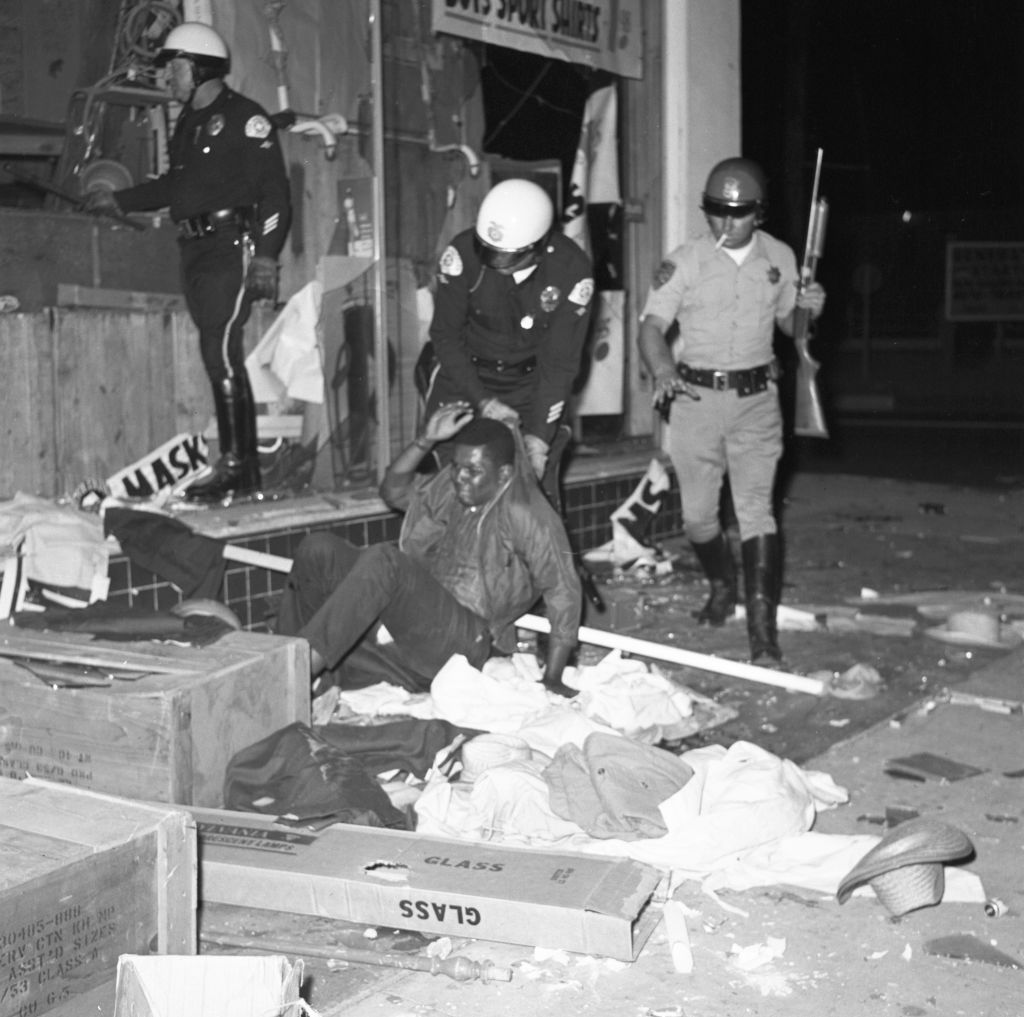The Watts Riots If We Had Social Media In 1965

Today marks the 60th anniversary of when the dangerous 1965 Watts Riots broke out, an uprising that left 34 people dead, thousands injured, and entire neighborhoods burned. More than just a moment of unrest, the events exposed the deeply rooted racial tensions in America and revealed how aggressively law enforcement often responds to the justified pain and frustration of Black communities.
In an age when social media activism has spurred significant change and sparked awareness about structural racism, police brutality, and injustices across the world, it’s easy to imagine that historic incidents like the Watts Riots would be widely documented and shared throughout the internet. While it isn’t immediately clear what impact that visibility may have had during those six days (Aug. 11-17), an X account dubbed @WattsRiots50 set out to paint a picture of what we may have witnessed if social media existed then. According to PBS, the project was developed in 2015 by the California Endowment’s Sons and Brothers, in partnership with the Community Coalition of South LA, to provide meaningful context around the controversial rebellion, using a medium that is accessible to all, especially younger generations.
To ensure accuracy and authenticity, the Watts Library contributed historical accounts from elders, along with photographs, newspaper clippings, and archival footage. The resulting visuals realistically depict the tension and intensity of the time—showing police with weapons drawn on protesters and soldiers conducting searches on residents—capturing the raw, standoff-like atmosphere exactly as it was in 1965. The account also contains social media updates of the riots, reporting some of the atrocities that were carried out during the showdown.
“We know the past is connected, and the same questions asked 50 years ago are coming up today,” Evangeline Reyes, program officer with the California Endowment, said. “In South LA, people of color are marked as threats. Interactions with police can be frequent and dangerous.”
How did the Watts Riots happen?
It was a seemingly routine traffic stop around 7 p.m. on a Wednesday that sparked what would become known as the Watts Riots. On Aug. 11, 1965, stepbrothers Marquette and Ronald Frye were pulled over by a white California Highway Patrol officer while driving their mother’s car near the intersection of Avalon Boulevard and 116th Street in the Watts neighborhood of Los Angeles, according to History. When Marquette failed a sobriety test, he panicked at the prospect of being arrested. Tensions escalated quickly as he resisted arrest, leading to a physical altercation with one of the officers. Ronald stepped in, both to protest the arrest and protect his brother.
As the confrontation unfolded, a crowd began to gather. Responding officers interpreted the growing group as hostile, which further inflamed the situation. A scuffle broke out between a bystander and an officer, prompting another officer to jab Ronald in the stomach with a baton before joining the altercation involving Marquette. Marquette was eventually subdued, handcuffed, and led to a patrol car.
Their mother, Rena Frye, arrived on the scene and, convinced the police were abusing her son, tried to pull the officers away from him. Her intervention led to another altercation, and she was arrested. Ronald, attempting to peacefully intervene on her behalf, was also handcuffed and detained.

The crowd, angered by what they had witnessed, grew more agitated as more officers arrived. Law enforcement used riot batons and shotguns to push the crowd back, but hundreds more gathered after hearing sirens and commotion. When two motorcycle officers attempted to leave the scene, one of them was allegedly spat on. They stopped to pursue the woman they believed responsible, drawing in more officers as the crowd surged toward them.
Eventually, police located Joyce Ann Gaines and attempted to arrest her for spitting. She resisted, and as officers dragged her away, the crowd—believing she was pregnant—erupted in outrage. By 7:45 p.m., the confrontation had escalated into a full-blown riot. Rocks, bottles, and other objects were hurled at vehicles stuck in traffic as chaos spread.
The riots lasted for six grueling days, resulting in 34 deaths, 1,032 injuries, and 4,000 arrests, involving 34,000 people and ending in the destruction of 1,000 buildings, totaling $40 million in damages, History noted.
To many young people today, the Watts Riots are a distant headline in a history book. But for those who lived it, it was a turning point—one marked by fire, frustration, and a fight for dignity that still resonates six decades later.
SEE ALSO:
Brothers Deny Any Involvement, Wrongdoing In Gym Mat Death Of Kendrick Johnson
Death Of Inmate At New York Prison Ruled A Homicide, Autopsy Suggests He Was Killed By Prison Guards



